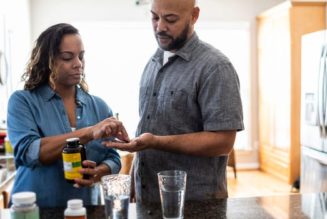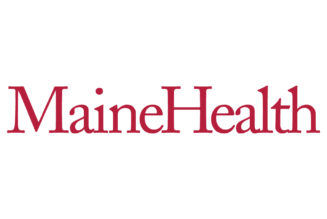Caltech alumnus Leroy (Lee) Hood (BS ’60, PhD ’68) has spent over half a century thinking about how to live a good life. Hood is currently the CEO of Phenome Health, a nonprofit created to measure individuals’ genetics, metabolites, environment, and behavioral habits—the so-called phenome—to help people live healthy lives and prevent disease.
The organization’s Human Phenome Initiative aims to conduct these multidimensional studies on 1 million people over 10 years.
On April 10, Hood gave the inaugural Presidential Distinguished Lecture at Caltech to discuss the shift in health care from disease care to wellness and prevention care. The Presidential Distinguished Speaker Series is a triannual series that features eminent speakers addressing timely topics in science and engineering, culture, public policy, and American higher education.
Here, Hood discusses his vision for a healthy and well society.
What is wellness and how do you measure it?
Wellness is not just the absence of disease—if you feel okay, that doesn’t necessarily mean you’re well.
There are two metrics that are really important in measuring wellness. First is the ability to measure one’s biological age: the age the body registers rather than the age your birthday indicates. Second, we’ve developed a powerful and effective way to measure BMI [body mass index] through metabolic molecules rather than using the old-fashioned height and weight measurement analysis. For example, with the old-fashioned BMI measurements, heavily muscled athletes are inevitably seen as obese, and this new metabolic BMI classifies them correctly as extremely healthy individuals.
The lower one’s biological age with respect to chronologic age, the better one is aging. Life span is how long you live; health span is how long you live with a healthy body and healthy mind. The quality of life is absolutely critical. Lowering the biological age means almost certainly that we’ll be able to push people into their 90s, or maybe beyond, and have them be mentally alert and physically capable. If you think about your life, all the things that you really care about—your schooling, your job, your interaction with others, your creativity, your happiness—are very much a function of how healthy you are. But I would say the ordinary person probably is at 30 percent of their wellness at best.
Could you elaborate on why do you set the level at 30 percent at best?
It is arbitrary but informed by looking at 5,000 people over four years.
How does a personalized, preventative approach contribute to wellness and healthy aging?
The data-driven approach to health allows one to assess and optimize the health trajectory of each individual. It also provides the data one needs to determine one’s biological age—the age your body says you are as opposed to the age your birthday says you are. The further your biological age is below your chronological age, the better you are aging. The algorithm we use for biological age also tells us how each individual can uniquely optimize their biological aging. In the Arivale program of 5,000 individuals [a precursor program to Phenome Health], the biological age of each individual decreased by about one year for each year the individual was in the program—showing that scientific wellness slowed the aging process in a healthy manner.
The four basic components of wellness are exercise, diet, sleep, and stress. Data-driven health, what we’re trying to do with Phenome Health, is about tailoring and personalizing these components for individuals. For example, some people have their muscle systems more tuned to aerobic exercise and some tuned to weight exercise. Not everybody should be doing the same things; doing what you do best is the most efficient way to exercise.
How would a preventative approach fit in with our current health care system?
Right now, the U.S. health care system is disease-oriented: doctors only make money if patients are sick. If people are well, physicians are not going to get paid. Today, Americans in total spend $4 trillion a year on health care. Eighty-six percent of that is treating chronic diseases. Suppose we could eliminate chronic diseases by intervening early before disease symptoms set in?
Wellness is about intervening at the very earliest stage and ensuring people don’t deviate from wellness. We can now detect at a very early stage the earliest transitions from wellness to most chronic diseases. Once we have detected those biomarkers, we’ll be able to start reversing the disease before it ever becomes clinically manifest, when it’s very simple. Given that, the whole focus on personalized medicine is on prevention.
We have to shift the health care system to value-based medicine as opposed to fee-for-service medicine. We must reorient to wellness and prevention.
What technological advances are needed to implement a wellness-focused society?
We need to drive the cost of phenomic measurements—bloodwork to profile metabolites, microbiome analyses, genomics, environmental surveys—down by two or three orders of magnitude. It currently costs around $6,000 to do these measurements per year, per individual. If we could drive that down to $5 per individual, then it could be a part of everybody’s routine health care.
In addition to bringing the cost down, in the future we’d like to simplify the measurement process and bring it into the home. It would be great if a person could take a single drop of blood at home and make all the measurements needed to do wellness assessments, send it in to a center for analysis, send the results to their physician, and so on. Getting blood draws twice a year is a hassle.
Finally, we need advances in hyperscale AI [artificial intelligence] like ChatGPT. With AI, we can use enormous amounts of data on millions of individuals to discover new possibilities for taking action on wellness that will cover the entire range of medicine. AI will be able to do correlations and analysis, and maybe even figure out causal implications that have been utterly impossible in the past.
What’s the ultimate goal? Is it to stop aging and cheat death?
Not at all. I don’t think we’re going to live forever. I don’t think we’re going to conquer death. But I think what we can do is extend our health-span enormously. And what is interesting is once people live beyond 100, when they die, they die very suddenly for the most part because they have a total systems failure. I see my job as getting everyone up into the hundreds, and then nature will take its course. And there are some that argue, look, we should be able to live to 120 or 150. And that would really require things we don’t know anything about.
One of the cool things about aging is that its basic processes are conserved [unchanged by evolution] from single-cell organisms like yeast all the way up to humans. That means that, often, what we learn in lab animals like nematodes and mice has relevance for humans. Why, for example, does the Greenland shark live to be 400 years old when other sharks have much more normal mammalian lifespans? There’s a lot we are still learning.

 Get our daily Pasadena newspaper in your email box. Free.
Get our daily Pasadena newspaper in your email box. Free.







